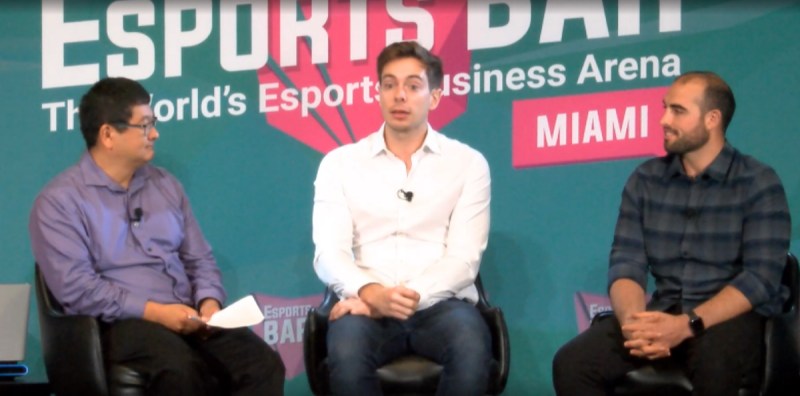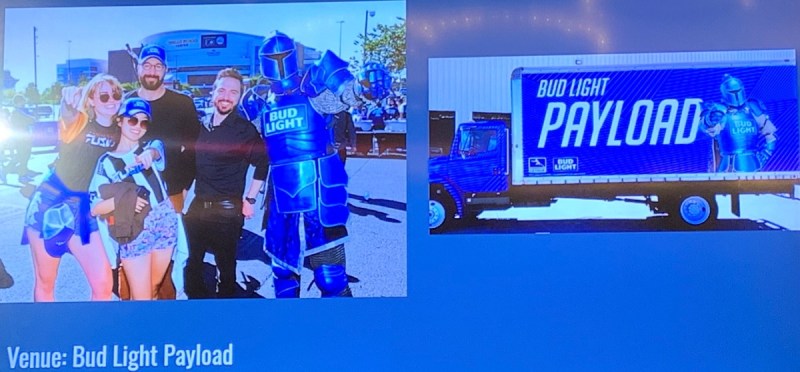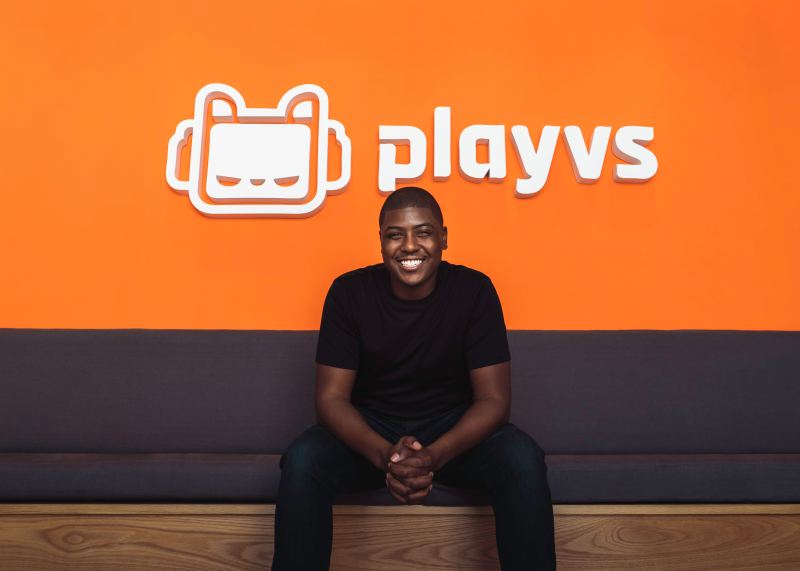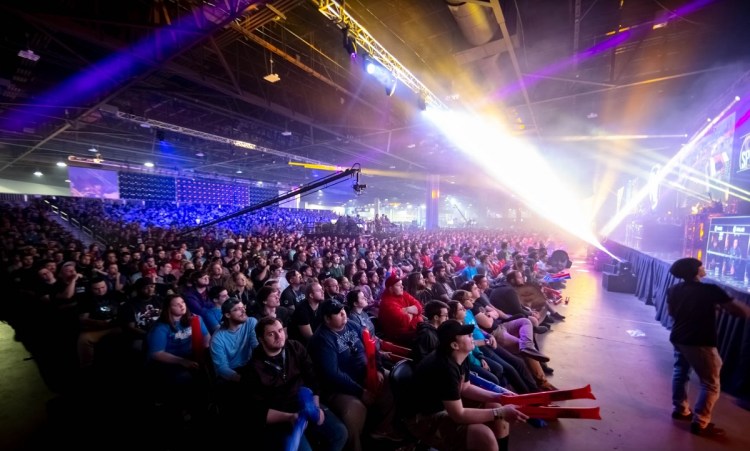Esports has been branded as a bunch of hype. But brands seem to have no choice but to dive in as they seek out the elusive millennial audiences who aren’t using traditional media.
All year, I’ve been covering esports startups raising a lot of money, for everything from global teams to data analytics. Esports teams are building out diversified businesses, spreading across different games, regions, and related businesses such as merchandise. Real estate companies are investing in esports venues in Miami, Las Vegas, and Los Angeles. YouTube, Twitch, are Mixer are making stars out of influencers like Ninja, DrLupo, and many others who are building the spectator audience of game and esports streaming.
I checked the pulse of the esports industry’s milestones as I attended the Esports BAR Miami event for the second year in a row. It was attended by more than 300 people this year, up considerably from last year’s event, according to Esports BAR Miami director Arnaud Verlhac.
Flying blind?

Above: Left to right: Dean Takahashi, Stuart Saw, and Joe Barnes at Esports BAR Miami.
Before I flew to Miami, it felt like the industry was wandering in the dark. Brand marketers like Joe Barnes, an experiential marketing director at Anheuser Busch, had to embrace esports events anyway even with this partial blindness.
June 5th: The AI Audit in NYC
Join us next week in NYC to engage with top executive leaders, delving into strategies for auditing AI models to ensure fairness, optimal performance, and ethical compliance across diverse organizations. Secure your attendance for this exclusive invite-only event.
Nielsen hasn’t published an update on revenue numbers for esports in part because it has to be careful, said Nicole Pike, managing director of Nielsen’s global esports business. The industry continues to work on ways to produce data that mirrors the accurate numbers for TV ratings.
“I hear so many brands say ‘I wish I had a way to measure esports,'” Pike said. “The data is there; the problem is transparency. Is this third-party verified data? The smoke and mirrors around return on investment need to be addressed.”
By comparison, the sports industry has rock-solid data, said Darren Cox, CEO of Millennial Esports, which has both a data analytics business and an esports business.
But that lack of data hasn’t paralyzed brands. In the keynote talk at Esports BAR Miami, MonteCristo, a commentator (known in real life as Christopher Mykles) pointed out numerous examples of brands creating authentic activations in esports.
Louis Vuitton stepped up to sponsor Riot Games’ League of Legends Championship Series. And Barnes at Anheuser Busch pushed ahead with authentic experiential marketing activations, like getting a crowd of 100 people at an Overwatch match to push a payload of beer before they could get access to the suds.
And Barnes said in a panel I moderated that Anheuser Busch believes it has 70% of the share for social sharing on beer in the esports community. That’s not bad for flying blind. To get the market expertise on which games work and which don’t, Barnes relies on experts like Stuart Saw, senior vice president for esports strategy at agency Endeavor.
“You cannot enter esports with 100% security,” said André Fläckel, esports strategist at Lagardére Sports, in a talk at the event. “There is always a risk. but you can reduce that risk.”
Plenty of risks

Above: Bud Light’s payload at Overwatch League event.
There are plenty of risks for brands. Anheuser Busch can’t team up with games that have young audiences, as you have to be 21 to drink its beer. It also isn’t fond of bloody games, particularly those with red blood. That means the most graphic games are out, while titles like Overwatch are more acceptable thanks to their cartoon style.
The way to navigate these risks is to pick experts (like Barnes did), create the brand’s story, choose the right partner to make that story come to life, and then always make sure to give back to the community of gamers, Fläckel said.
Anheuser Busch figured out that it could also direct people to its own Twitch channel for Overwatch-related banter. And that channel had an “age gate,” so that young kids weren’t able to watch it. That was a better way for the beer company to target the right audience.
“The Bud team has proved out that if you come with content that is additive, people will go to it. This is a content-hungry audience,” said Saw, on a panel I moderated. “The average esports consumer is consuming more than 100 minutes of content per day. If you can add to that experience, add something they’re not getting elsewhere, they will come to you, and as a brand you can be very successful.”
The uncertainty is the same at the teams and the publishers and the investors. Should team owners cough up equity to reward players with stock options, even though they’ve been paid mainly salaries in the past? Should team owners also pay $25 million for a Call of Duty esports league franchise, or $45 million for an Overwatch League franchise license?
Whatever the uncertainty, the teams and esports investors have moved ahead.
Many teams are creating multipronged businesses, like Dignitas, which raised $30 million for its multi-game esports club, investments in esports, and a media and entertainment content business. Team Vitality raised $22 million as it expanded from Europe to Asia. Fnatic also raised $19 million to expand its hardware business and add more teams. 100 Thieves raised $35 million as it expanded aggressively into apparel. Gen.G built a global headquarters in Los Angeles and added a new NBA 2K team in Shanghai to bridge East and West. Immortals raised $30 million as it expanded into Brazil. And Rekt Global raised money from celebrities like Utah Jazz star Rudy Gobert as it acquired game media and content firm Greenlit.
What sort of valuation should investors give to these esports teams as they raise rounds of $30 million or more? And will the riches of the top esports athletes and teams ever trickle down to the startups like PlayVS, which has raised $96 million to run high school esports tournaments?
It’s not all darkness

Above: Todd Sitrin is senior vice president for esports strategy at Electronic Arts
Multiple companies like Cox’s Millennial Esports and Endeavor’s Saw said they were coming to the rescue with better data analytics.
Epic Games gave away $3 million to the winner of its first-ever Fortnite World Cup, which drew 40 million competitors. Riot Games said recently that, despite competition from Fortnite and Overwatch, League of Legends has 8 million concurrent players every day — even after 10 years.
Todd Sitrin, senior vice president for competitive gaming at Electronic Arts, said in an interview that last year’s FIFA esports competition received more than 800 million minutes of views, and it has been growing each years. Each year, EA is making bigger plans based on that solid growth, and it announced yesterday that it will have a $3 million prize pool this year for FIFA 20 esports.
And Han Park, CEO of Prize Payments and an esports investor, said in an interview that esports prizes have surpassed $300 million in 2019, far above $160 million from a year ago, according to EsportsEarnings.com.
Cox at Millennial Esports, which is building an esports racing arena in Miami, said that 78% of the aficionados of real-world motor racing are finding the sport through gaming. He spoke onstage with Formula 1 racing legend Rubens Barrichello, who has become a fan of esports racing.

Above: Left to right: Darren Heitner, Darren Cox, and Rubens Barrichello at Esports BAR Miami.
Todd Harris, cofounder of Smite maker Hi-Rez Studios, said on a panel I moderated that his company commissioned a study that showed the uplift from esports for the game, and it showed great results. Now in its sixth season, Smite has 30 million users and generated $300 million in revenues, enabling with Hi-Rez’s other games to build up a team of 450 people.
“From a publisher perspective, there’s this question about esports ROI,” Harris said. “You spend a lot of money on events. Does it really return value? If people are watching Smite, does that actually take them away from playing Smite, or do they play more Smite?”
Harris added, “We looked at that very, very objectively. We worked with a third party out of the Emory Research Center. We did a very controlled test. There was an eight-week period where we took two groups of players. One group watched Smite esports and the other group did not. Before the test they had similar engagement patterns, play patterns. We saw definitively that in that eight-week period, the group that was the same other than they watched Smite, they spent more — and particularly over that short period of time they spent $5 more above their normal spend — and they engaged more, 600 minutes more.”
FanAI CEO Johannes Waldstein said his company partnered with Hi-Rez to figure out the exact tastes of its audience, like whether they like BMWs or Ford trucks. They take the anonymized Smite data and correlate it with other data to figure out those tastes and pass it on to brands and potential advertisers to help Hi-Rez find sponsors and advertisers.
“We take those tens of millions of data points, and instead of having a thousand-person panel, we have tens of millions of people who play the game, who watch on Twitch, and we can see what categories they’re spending in,” Waldstein said. “Automotive is one of the categories where millions and millions in the U.S. are spending a lot. Todd could go to a large U.S. automaker and we could say, ‘These hundreds of thousands are buying this make and model of car. This is how they spend on domestic or foreign cars.'”
And big companies like Intel are pumping up esports broadcasts, with a plan to give esports a lot of exposure ahead of the Tokyo Summer Olympics in 2020.
The demographics of the future

Above: Left to right: Samantha Anton, Mark Deppe, Mark “Garvey Candella, and Susie Kim at Esports BAR Miami.
Perhaps the most convincing or optimistic conversations I had at Esports BAR Miami were in sessions where we talked about the migration of esports to colleges and high schools.
Those institutions are struggling with the lack of engagement in education. Students don’t like learning the old way, which doesn’t involve smartphones. The schools have students who are ostracized or left out because they aren’t part of the traditional sports social structures.
Esports can appeal to those who are left out. The nerdy ones. Those who aren’t physically fit. Esports can be rewarding as a way for schools to bring non-physical athletes into the social fold, where they can thrive on competition and camaraderie.
I recently asked Delane Parnell, CEO of PlayVS (which raised $50 million recently for high school esports) if parents are esports’ enemy, as they likely would rather have their kids read books in high school instead of play video games.
He replied, “Parents want their kids to just succeed. Every parent believes their child is the next Michael Jordan and whatever talent they have. Maybe it is playing tennis or soccer. Every parent thinks their kid is the best. And they certainly want to support their kid in pursuit of that ambition. And so what we’re able to do is allow kids who are really good at playing video games, and more importantly, really passionate about video games and community, and we allow them to be recognized for their talents, to be validated for your talents. I think parents are really excited about that aspect.”
And colleges like the University of California at Irvine have built esports centers on campus and why they’re giving out scholarships sponsored by companies such as Riot Games, said Mark Deppe, director of esports at UC Irvine. Nearly 200 colleges are giving away millions of dollars through such scholarship programs now.
And high schools and parents who might normally oppose obsessive gaming — because it takes away from studying — are embracing esports because it is the path for their kids to become more engaged, social, and successful.

Above: Delane Parnell is CEO of PlayVS.
“Parents say that my kid has been into too many games,” said Mark “Garvey” Candella, director of strategic esports partnerships at Twitch. “I say to the parents, ‘Replace the word ‘games’ with the word ‘opportunities’ and say that again.”
In this way, esports can start changing society at the high school level. And as that change migrates upward and expands over the years, it has a chance to become a much bigger part of the lives of young people than other places or pursuits, like casinos, golf courses, or tennis courts.
And that will flow upward to the top esports competitions, where it is not inconceivable that esports audiences and revenues will outnumber those for the Super Bowl, the Oscars, and the NBA championships.
Perhaps I am falling for the hype. But if you notice that we’re getting to have more spectators of games than players of games, if you see the growth in prize pools and the notion that athletes can make a living player games, and that the biggest brands in the world are chasing after these young athletes and their fans, then you might agree with me.
Disclosure: The organizers of Esports BAR Miami paid my way to the event. Our coverage remains objective.


